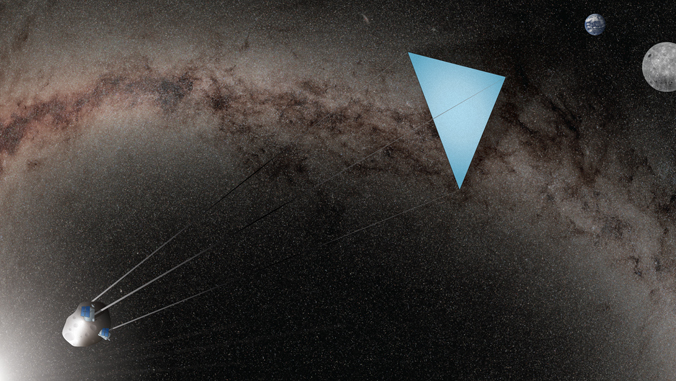The Earth’s average surface temperature is increasing faster every year. Countless ideas are created to curb this very sinister and dangerous process. István Shapaudy, a Hungarian fellow at the University of Hawaii’s Institute for Astronomy, came up with another large-scale idea. In this, a huge umbrella would be attached to an asteroid captured from outer space, whose shadow would soften Earth’s radiation. The asteroid was needed as a counterweight, which would hold it against the radiation pressure of the Sun. Engineers can start working out the technical details now to come up with a workable plan to mitigate global warming within a few decades.
Perhaps the simplest possible principle in combating global warming is to stop some of the solar radiation from reaching the Earth with some kind of shading element before the radiation reaches our planet. To achieve the desired effect, it is sufficient to block part of the sunlight. Of course, these solar protection devices must be installed outside the atmosphere, in outer space.
This solution, called a sun shield, has already been proposed several times and in various forms. The disadvantage of previous ideas is the huge mass of these devices and their hardened elements, which is necessary so that the shading elements can withstand both Earth’s gravity and the radiation pressure of the Sun. Therefore, even if such a system could in principle be achieved using very light materials, its costs would be unacceptably high.
By comparison, Sabaody’s ingenious idea contains two important innovations. On the one hand, instead of a large mass of parachute material, a counterweight would be attached with cables to ensure the stability of the massive structure, and on the other hand, this counterweight would be an asteroid captured from outer space, the material for which would not have to be sent to outer space from the Earth. Thus, launch costs would be less than one percent of the cost of launching a solid structure due to the much smaller mass of the devices to be transported from the ground.
“Here in Hawaii, while walking down the street in the midday sun, many people use umbrellas to block out the sun’s rays. This gave us the idea that we could protect ourselves from the looming climate catastrophe in a similar way,” Zappudi offers us the birth of the idea.
Sabaody calculated that we would need to shade 1.7% of the solar radiation that reaches Earth in order to avoid a catastrophic increase in the global average temperature. For this, a total of 3.5 thousand tons of mass, that is, the sail and cables, must be transported from Earth to outer space, which is a hundred times lighter than the physical requirements of a solid solution without counterweights.
The device will operate at the L1 Lagrange point in the Sun-Earth system, and asteroids captured from nearby or debris transported from the Moon can be used as a counterweight. Significant cost savings can be achieved by using materials available in outer space.
Sabaody also takes into account that interference with the Earth’s climate system is a sensitive issue, so he recommends implementing the device in several stages, assembled from several smaller pieces. In this way the program can be advanced gradually with constant and careful monitoring of the consequences. Moreover, the costs are directly proportional to the degree of shading. Of course, work must be done on the method of controlling and maintaining the device, as well as ways to deal with potential problems and malfunctions.
With our current launch vehicles, approximately 50 tons of payload can be delivered to LEO at the same time. Thus, the delivery of the parachute proposed by Szapudi to point L1 remains a great challenge, but unlike previous ideas, this is already within the scope of solutions that can in principle be implemented using today’s technologies.
source: University of Hawaii, Technical article explaining the idea in detail (Shabaudi, 2023, PNAS)
comment












































